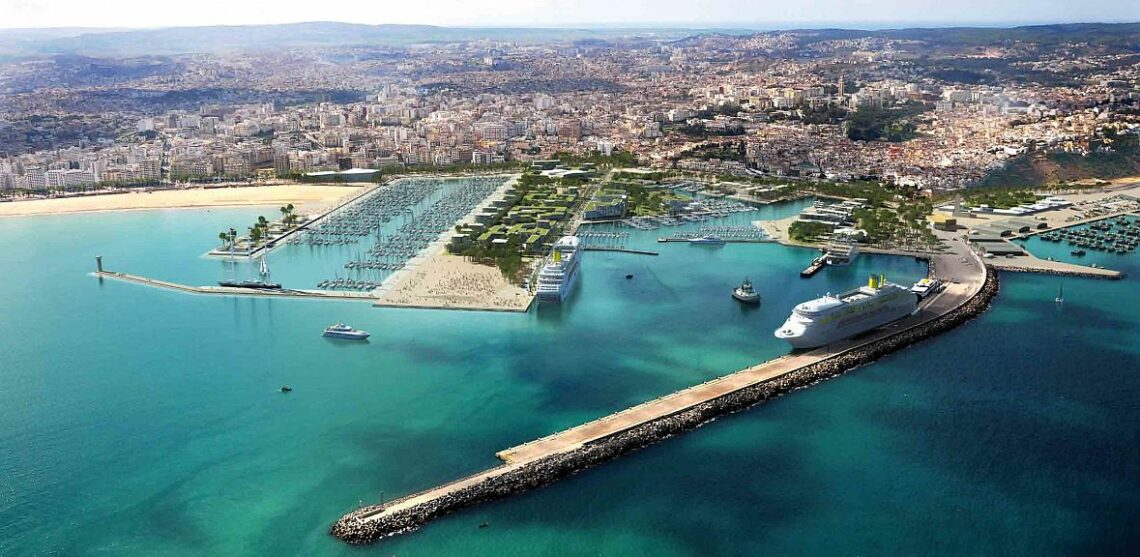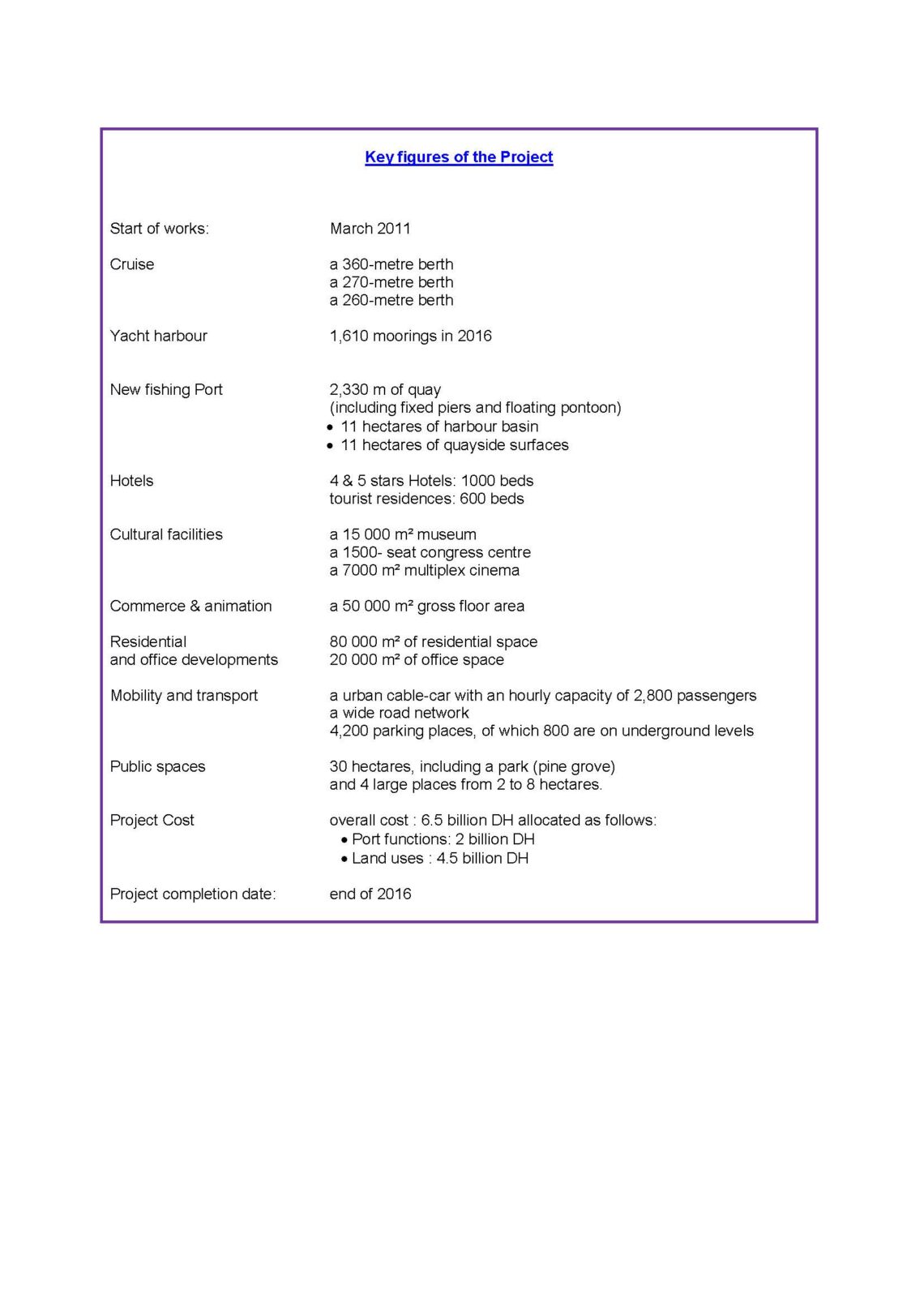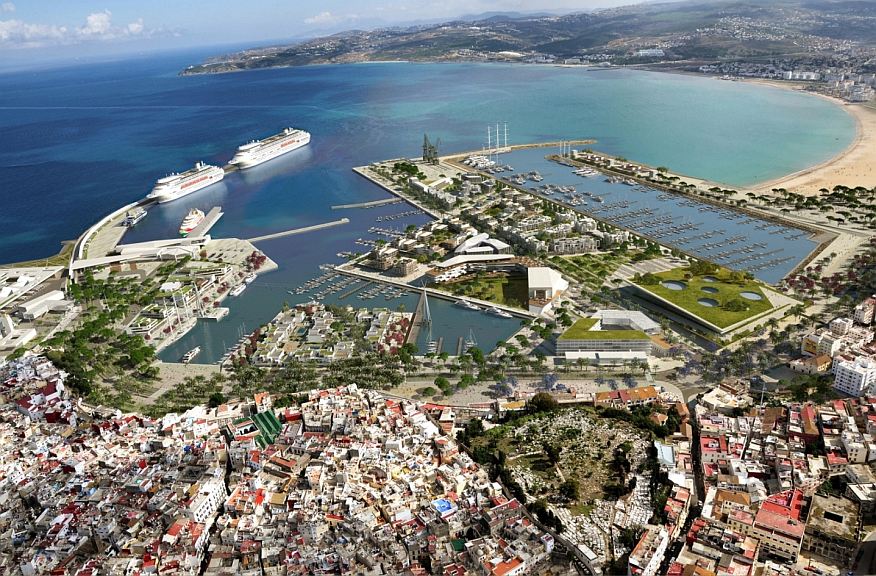Last September, King Mohammed VI officially launched the Tanger Métropole project. The project aims to make Tangiers more attractive to international travellers. That same objective is also behind Tanger Ville, the reconversion project for historic port zone, whose initial works began in 2011.
The launching of Tanger Métropole was an opportunity for Morocco’s sovereign to review the state of progress of Tanger Ville. Two major aspects of the project – yachting and cruises – will show significant progress in 2014, with the partial commissioning of the marinas and the inauguration of the first stage of the cruise-ship dock expansion.
To learn more about these developments, we talked to Driss Benabad, Project Director at SAPT – the development corporation in charge of the port zone reconversion of Tanger Ville – AIVP member.
The Tanger Ville project will position Tangiers as one of the major tourist, cultural, and events destinations in the Mediterranean. The reconversion of the 84 ha site, located in the city centre next to the Medina, is considered a unique opportunity to put City-Port relations on a new footing.
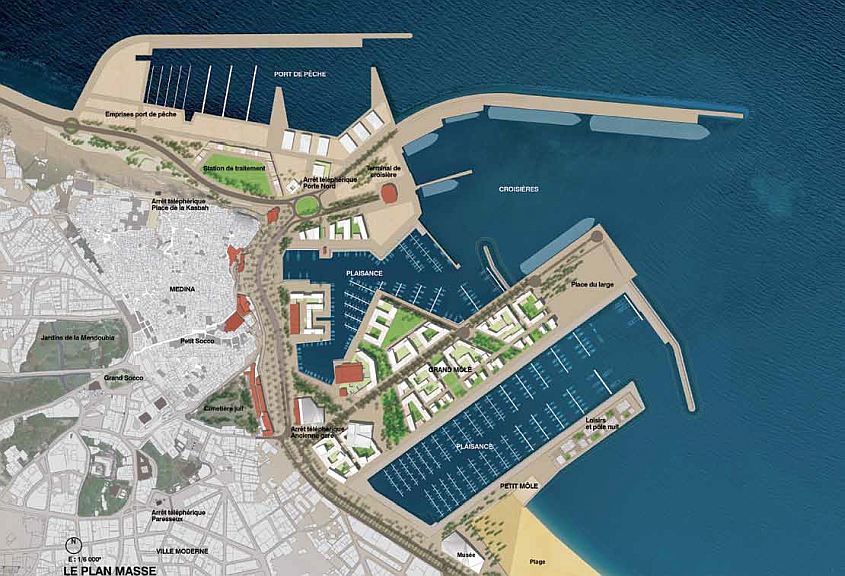
AIVP – In terms of the cruise industry, your stated goal is to receive 300,000 cruise passengers in 2016, once the reconversion is completed. What are the current numbers of cruise-ship passengers, and what is the rate of growth needed to achieve your goal?
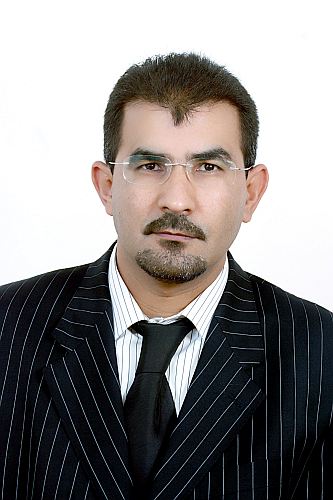
In spite of the international economic crisis, the cruise market has grown at an average rate of 3% since 2009. 2.1 million cruise passengers have visited our western Mediterranean region. On average, a cruise passenger directly spends 88 € during each stopover at a Mediterranean port. After a slow period in 2000-2003, Tangiers began to recover again – in 2004 – as a cruise destination, growing at 20.7% annually. In 2011, Tangiers received 113 cruise ships, for a total traffic of 102,500 passengers. Nationally, it is the third-ranked destination, with market shares of 24% and 20% respectively, in terms of the number of ship visits and number of tourists.
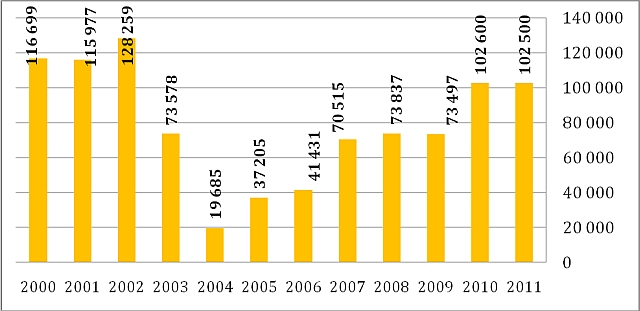
For rapid growth of the cruise-ship activity in Tangiers, the ideal solution would be to complete the three berths in the short term, so as to be able to receive new-generation cruise ships: a 360-metre berth, a 270-metre berth, and finally a 260-metre berth. However, for budgetary reasons, the investments have been phased in two stages:
- Phase 1 : an 80 m extension of Dock 5 attached to the main wharf, and removal of the existing RoRo ramp, giving a total length of 260 m. This phase also includes the building of reception facilities. 6.2 million € will be invested over 10 months. Works progress: 100%
- Phase 2 : a 360 m extension of the same dock, giving a total length of 620m, which is enough dock space for the simultaneous berthing of 2 ships. This phase also includes renovation of the commercial pier. This work involves an investment of 13.4 million €, and will be executed in 2015-2016.
Moreover, the fast-ferry link to Tarifa will be maintained: 3 berthing spaces will be dedicated to this activity. The maritime terminal will be upgraded and modernized.
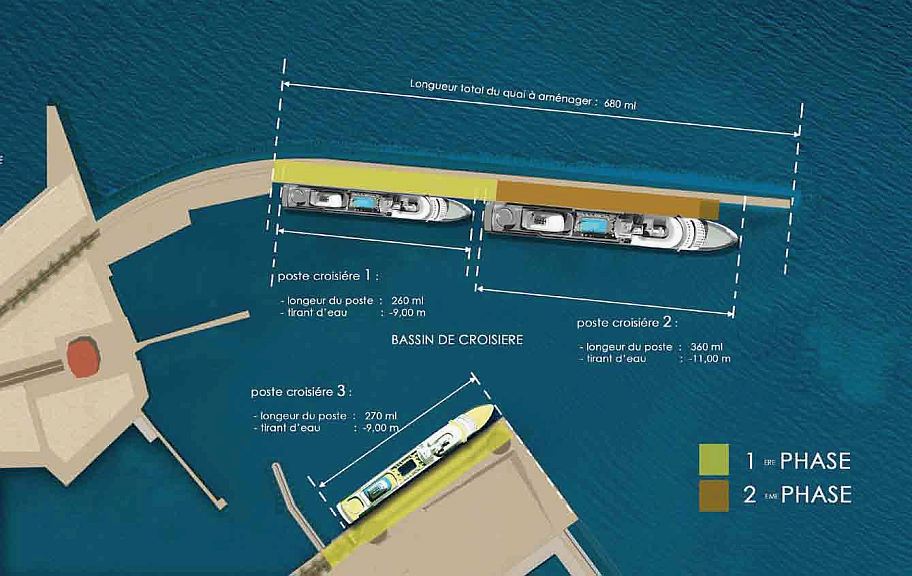
AIVP – All these new dock facilities are certainly necessary for receiving cruise ships and passengers, but they are not, in themselves, sufficient to attract passengers and ship services. What are the main factors that are expected to increase the attractiveness of Tangiers?
Driss Benabad, SAPT – The studies we have undertaken, and the contacts we have made with cruise companies, all indicate that the port of Tangiers has great growth potential.
In fact, Tangiers has major assets that will support the growth of the cruise industry: a unique geographic location that is ideal for both Atlantic and Mediterranean itineraries, the rich history of the city and the surrounding region, and the adequate roadways and communications infrastructure with the rest of the Kingdom.
Being so near the Medina is also an excellent opportunity to promote cultural tourism. With this in mind, our company has undertaken renovation work on the wall of the Medina and the Kasbah, as well as opening the ancient doors and access ramps.
The expected result will be to attract 300,000 cruise passengers in 2016 and 750,000 in 2020. To achieve that goal, an action plan will be launched as a complement to infrastructure development, in coordination with stakeholders in the tourism sector. This involves the following aspects:
⦁ Diversification of activities offered to tourists;
⦁ Improving tourist reception facilities at the various sites they visit;
⦁ Improving the current ground transportation offer;
⦁ promotion and communication of the region’s tourist attractions;
⦁ Selecting a world-class cruise terminal managing company, etc.
AIVP – The urban cable-car project has received a lot of media coverage. Why did Tangiers choose this mode of transportation, and what criteria were used for selecting the locations for the stations?
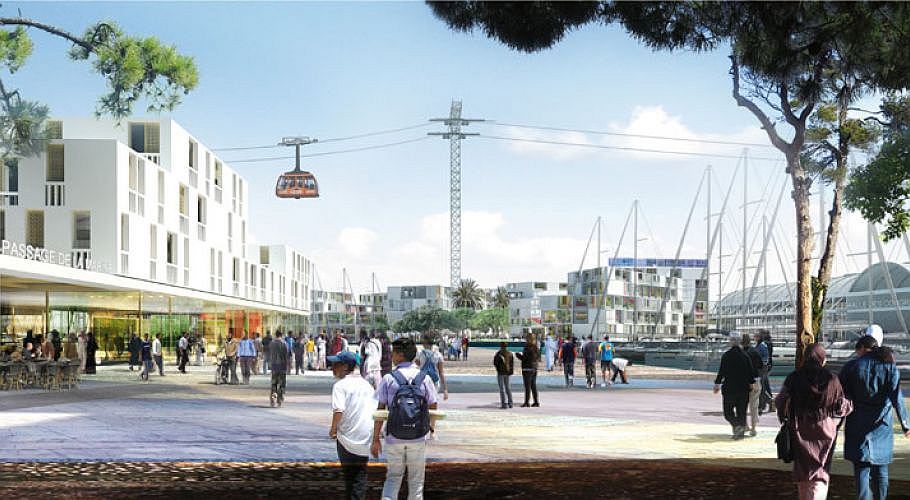
Indeed, in order to better connect the Port with the Medina and the new urban centre, and taking into account the diversity of future users – cruise passengers, boaters, and local residents – the new port of Tanger Ville will be equipped with a cable-car transportation system.
The cable-car system will be capable of handling a flow of 2,800 passengers per hour over a total distance of 2 km. It will link the Kasbah, the cruise terminal, the marinas, and Place Faro. Apart from its public transport function, it will in itself be a tourist attraction providing a scenic view of the city, the port, and the bay of Tangiers
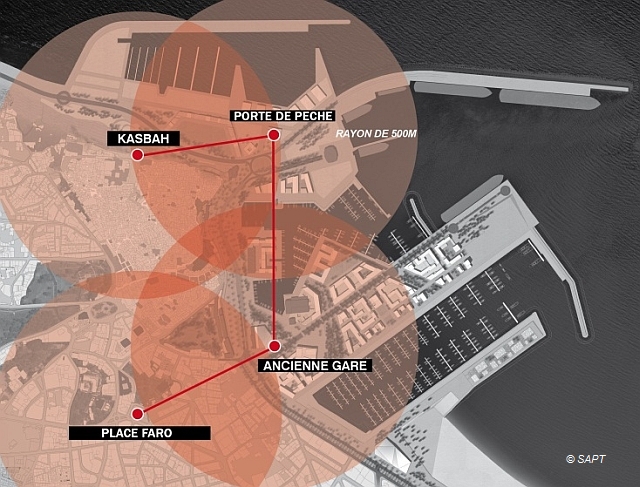
Two stations will be built at the port zone, and there will be another two stations in the city.
AIVP – In environmental terms, the cable-car system enjoys a positive image. The environment is also an important component of your project. Could you tell us a little more about it?
Cable-cars are indeed an ecologically sound transport system. But we could mention several other such elements.
In the first place, the Tanger Ville Port Reconversion Project has received environmental certification from the national environmental impact evaluation commission. Indeed, site development activities will be environmentally friendly. For example, when the new marina is built, the sand dredged will be transported and placed at several beaches in the Bay of Tangiers.
The vegetation system in the reconverted port will consist of species adapted to the bioclimatic characteristics of the Tangiers zone.
Moreover, the emblematic buildings of the port area will be restored and reconverted, in order to maintain the present atmosphere of the port. Similarly, nearby monuments will be restored and/or enhanced
AIVP – What are the objectives and the work schedule for the boating component, and how much of this work has already been completed?
Driss Benabad, SAPT – The boating/yachting market offers many opportunities. The port of Tanger Ville aims to become, by 2016, the leading yacht harbour not only of Morocco but of the entire Straits of Gibraltar area, and to offer one of the best ranges of services, with a capacity of 1,610 moorings. The long-term goal is to become the mega-marina of the entire region, with 3,000 moorings. The 1,610 mooring capacity will be achieved in 3 stages:

- 1st stage: a new yacht harbour with 1,080-mooring berths will be built near the commercial jetty. Work started in May 2011, and completion is due in late 2015. This stage represents a total investment on the order of 37.5 millions €. At January 2014, the works were 85 % completed.
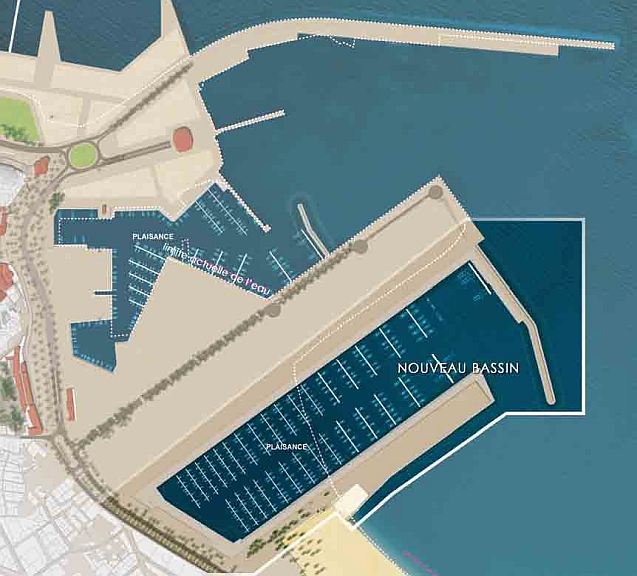
- 2nd stage: at the location of the existing yacht harbour. This corresponds to the old port’s first phase of renovation. The work has been proceeding in stages since November 2011 and will continue till late 2014 (expansion and deepening of the harbour basin, with a capacity of 100 moorings, building a new basin intended for boat repair, etc.). This stage represents an investment of 7.8 million €. At late January 2014, the works were 50 % completed.
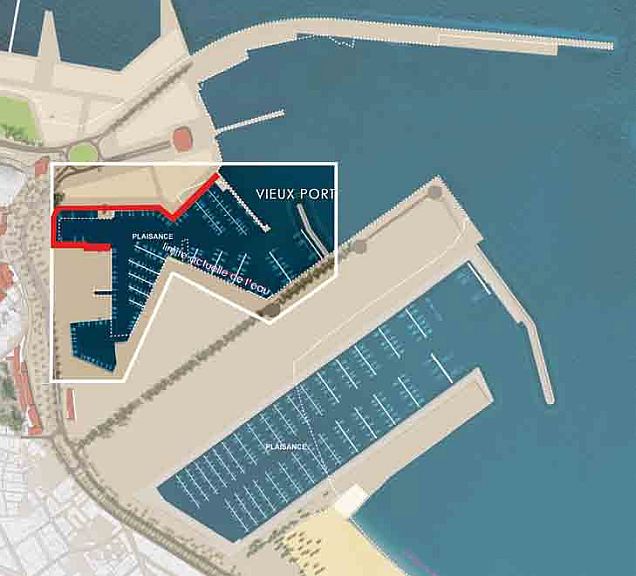
- 3rd stage : Once the new fishing port is commissioned, the old port’s second reconversion phase will add another 430 moorings. These works involve an investment of 12.5 million € starting in January 2015, and will be completed in late 2016.
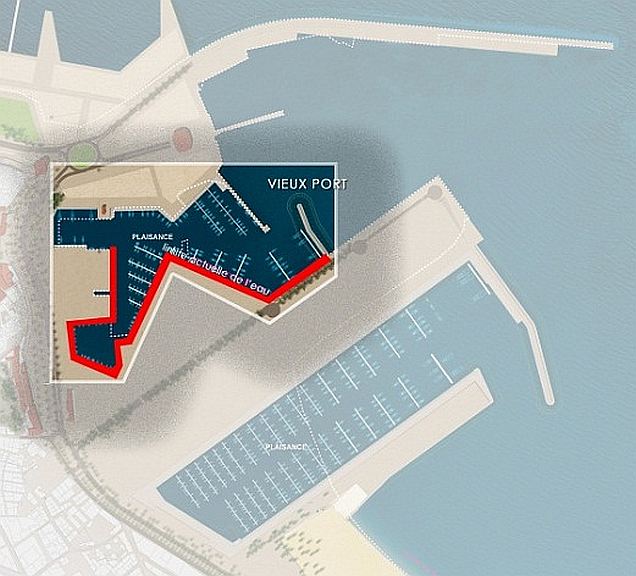
AIVP – What are your ambitions with regard to the Mediterranean boating and yachting market?
Driss Benabad, SAPT – Studies carried out by SAPT reveal a large discrepancy between supply and demand in the Mediterranean. There are around 1000 yacht harbours in the Mediterranean. Around 90% of capacity (around 350,000 berths) is concentrated within five countries (Italy, France, Spain, Greece and Croatia) catering for an estimated fleet of 600,000 boats (sailing boats and inboard motor boats).
The region of the port of Tangiers (covering the Moroccan, Andalusian and Portuguese Algarve coasts) is home to around sixty marinas with a total capacity of 22,000 berths.
The region of the port of Tanger Ville is also affected by the lack of capacity experienced throughout the Mediterranean. The region has an estimated deficit of 15,000 berths and experiences increased pressure from the yachts that pass through the straights (assessed at 60,000 per year).
Tangiers will present an integrated solution bringing together diverse services linked to ship repair, stores for the sale of boats and spares as well as nautical schools (sailing, scuba diving and yachting schools, etc.)
The port will include a 20,000 m² shipyard featuring a dock with a boatlift designed to dry-dock boats of 40 metres of length. Another space with a surface area in the order of 30,000m² may be dedicated to winter boat storage.
In order to seize all the opportunities presented by the passing of yachts through the straights, 25% of capacity will be dedicated to this traffic through the short and long-term rental of berths. The rest of the berths will be dedicated to national and foreign yachters. This will attract a significant number of tourists.
In order to develop yachting in Tangiers, the following measures will be put in place:
⦁ entrust a specialist with the management of the marina in order to ensure that it complies with the highest international standards;
⦁ simplify administrative procedures;
⦁ ensure the highest standards of cleanliness, security and respect for the environment;
⦁ encourage the creation of nautical schools (sailing, yachting, jet-ski, etc.);
⦁ organise events in Tangiers to promote yachting: nautical shows, sporting exhibitions, etc.
⦁ put in place a competitive and attractive price policy covering the granting of berths as well as their short and long-term rental.
AIVP – The Tanger Ville project is not only designed to draw greater visitor numbers, but also to create a new city-port relationship and offer local residents a new quality of life. What are the main principles being adopted to ensure the integration of new facilities with the existing city?
Driss Benabad, SAPT – The master plan of the reconversion project in the port zone of Tanger Ville will allow the port to:
⦁ find a better balance between public and private spaces in terms of surface area and organisation;
⦁ boast spaces that were built based on the project’s impact on the landscape when viewed from the town as well as from the port and the bay;
⦁ restore and reconvert all the monuments and symbolic buildings in the port zone in order to safeguard the spirit of the area;
⦁ balance urban functions in order to make the site a lively and bustling destination;
⦁ carry out a reconversion that works in harmony with the environment.
The project’s overall surface area is 84 ha, distributed as follows:
⦁ Public spaces: 30 ha
⦁ Road space: 10 ha
⦁ Port facilities: 30 ha
⦁ Built-up area: 14 ha
AIVP – I see that a large area (30 ha) will be destined for public spaces. Was this preference for “breathing space” rather than for “densification” decided on from the start, or had other denser scenarios been initially considered?
Driss Benabad, SAPT – The initial choice was to provide the city with 30 ha of public space, in view of the lack of parks and public spaces in the city. The project considers the creation of 5 public places:
⦁ Place Bab Al Marsa, or “Doorway to the Port”, covering 8 hectares located along the current port entrance area, from the facade of the RENSCHAUSEN buildings and the old train station, to the Borj Dar El Baroud. Place Bab Al Marsa will be the link between the old port and the Medina.
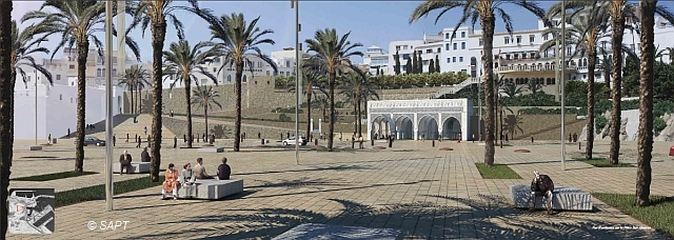
⦁ Place du large: located at the end of the commercial pier between the yacht harbour and the cruise harbour. Covering 5 hectares, Place du Large will offer a panoramic view of the sea and the Medina and will serve as an ideal multi-purpose site where visitors can stroll along the water front, and where different cultural events can be held.
⦁ Place de la Presqu’île (the Peninsula): located along the new Marina’s protective seawall, Place de la Presqu’île will cover a total area of 2 hectares. The elevation of this area will be two meters higher than the other wharfs, and it will be built to resemble a ship’s bridge. It will include promenades, restaurants and spaces for diverse activities.
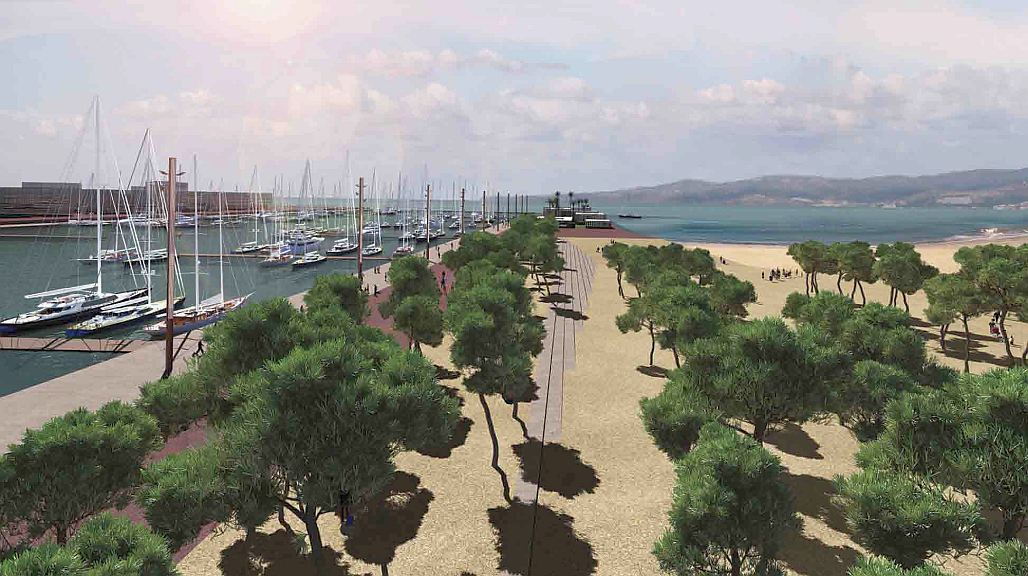
⦁ Le Parc du Port: This large pine grove will be the project’s green heart, located from the old port’s new basin to the new yacht harbour, on 3 hectares.
⦁ Place of the Mosque: which will cover 1.5 hectares around the Great Mosque. This esplanade serves to connect the fishing port area with the rest of the project. This space will be the first stopping point for cruise passengers disembarking at the port of Tangiers.
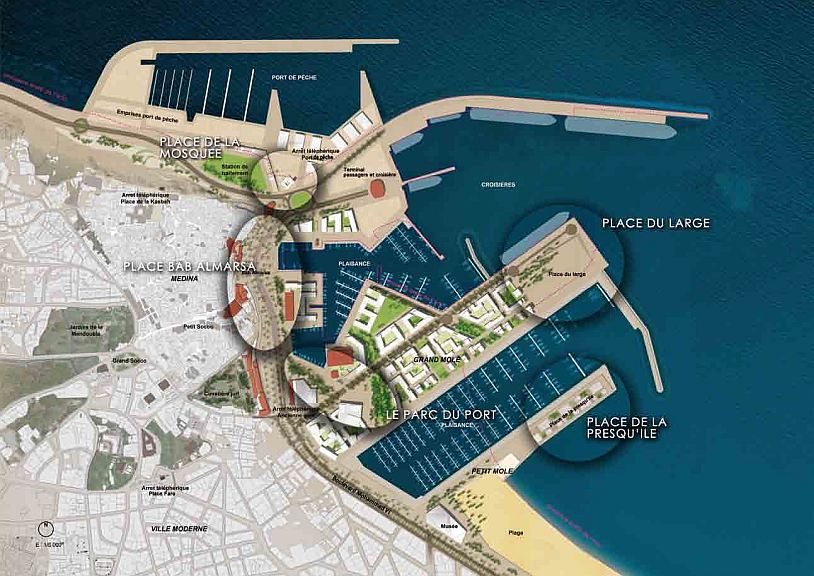
AIVP – The new office space and residential space have been grouped mostly on a large pier. Why was that?
The urban project of the Tanger Ville Port Zone will include the construction of office space (20,000 m²) as well as high-end residential space (80,000 m²). The creation of this component aims to turn this site into a dynamic living space, where people can live, work, and have fun.
With a view to maintaining a coherent urban design and preserve public spaces, this component was consolidated into a large pier, which is located next to the modern city centre, in perfect coordination with hotel services.
The large pier is located between the two marina basins and will be an ideal residential location for boaters, either for permanent residence or in transit.
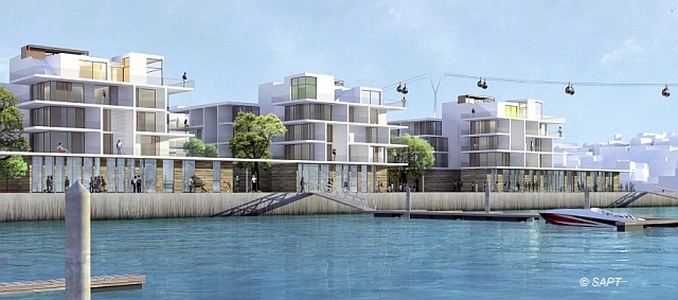
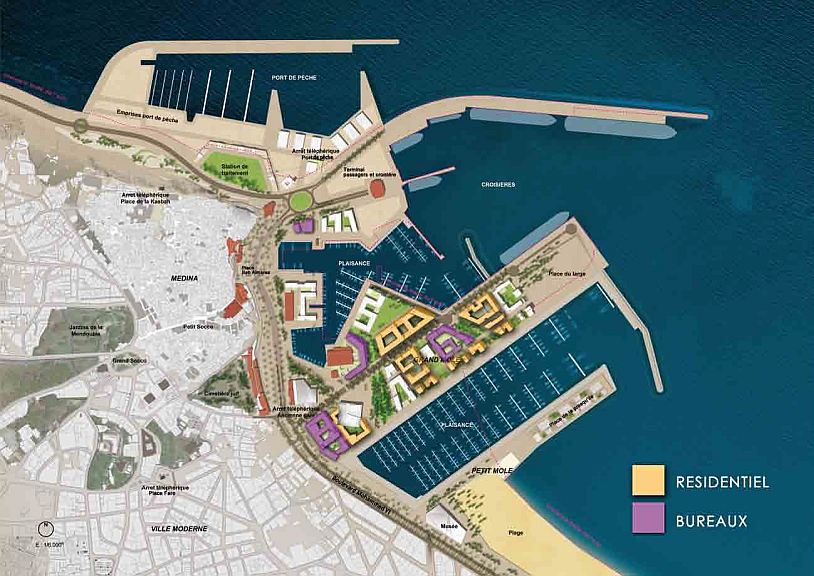
AIVP – Would you say that these new developments will be a complement to, rather that competition for, the existing attractions?
Driss Benabad, SAPT – The scarcity of available real estate in the city – including the Medina – the disorganization of commercial activity in the city, and the potential number of customers in Tangiers, are all factors that prompted SAPT to propose an integrated project to complement the existing offer in the city.
The “commerce & animation” component of the project has two sub-components:
⦁ A large, world-class commercial centre, approximately 30,000 m² in size;
⦁ Ground-floor stores and boutiques covering about 20,000 m², and including:
⦁ Brand-name stores and the corresponding furnishings, etc.
⦁ Showrooms offering yachts and nautical sports equipment;
⦁ Cafés, restaurants and entertainment venues;
⦁ Arts and crafts stores, agencies, and services.
The commercial component of the project will benefit from the strategic location right in the city centre, just below the Medina. It will also benefit from the relative wealth and diversity of the tourist clientele: ferry passengers, cruise-ship passengers, boat owners and captains, local Tangiers customers, as well as other national and international visitors.
Market studies undertaken by SAPT indicate that we will receive 7 million visitors per year starting in 2016, with estimates of spending potential of more than 178 million € (2 billion dirhams) per year.
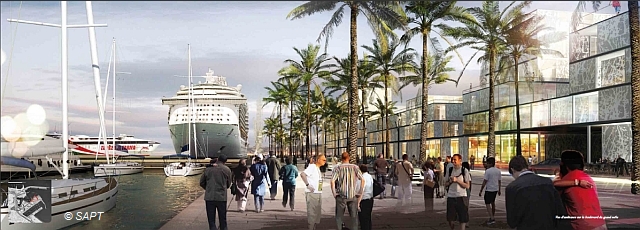
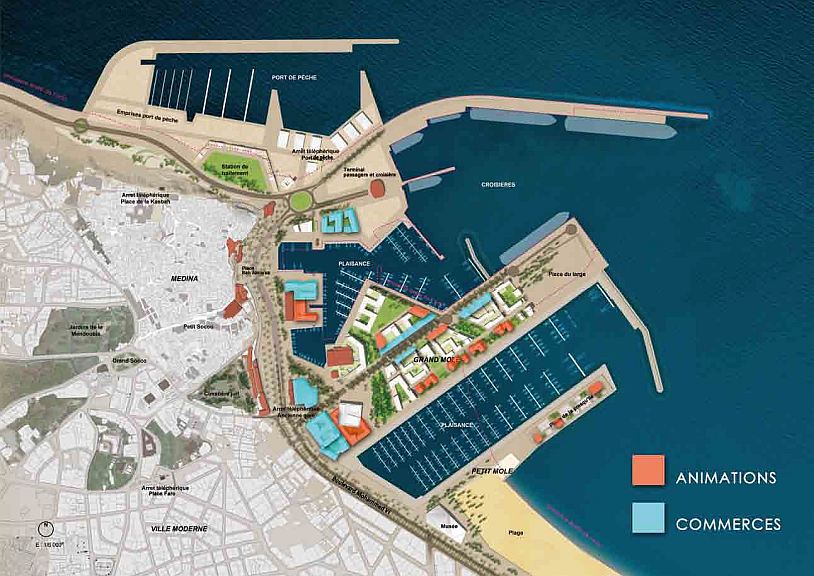
AIVP – What will be the total cost of the project, and what sources of financing and types of partnership have been considered?
Driss Benabad, SAPT – The implementation and the construction activities of the Tanger Ville Port Zone Reconversion Project will be completed in late 2016. The project represents a total investment of about 579 million € (6.5 billion Dirhams). The port infrastructure was financed by the State. The real-estate component will be developed by SAPT.
Calls for expression of interest were published to select pairs of investors–administrators to develop and manage the following components:
⦁ Hotels and reception facilities;
⦁ Commercial centre ;
⦁ Cable-car system.
Negotiations are under way with the interested parties selected for each component.
